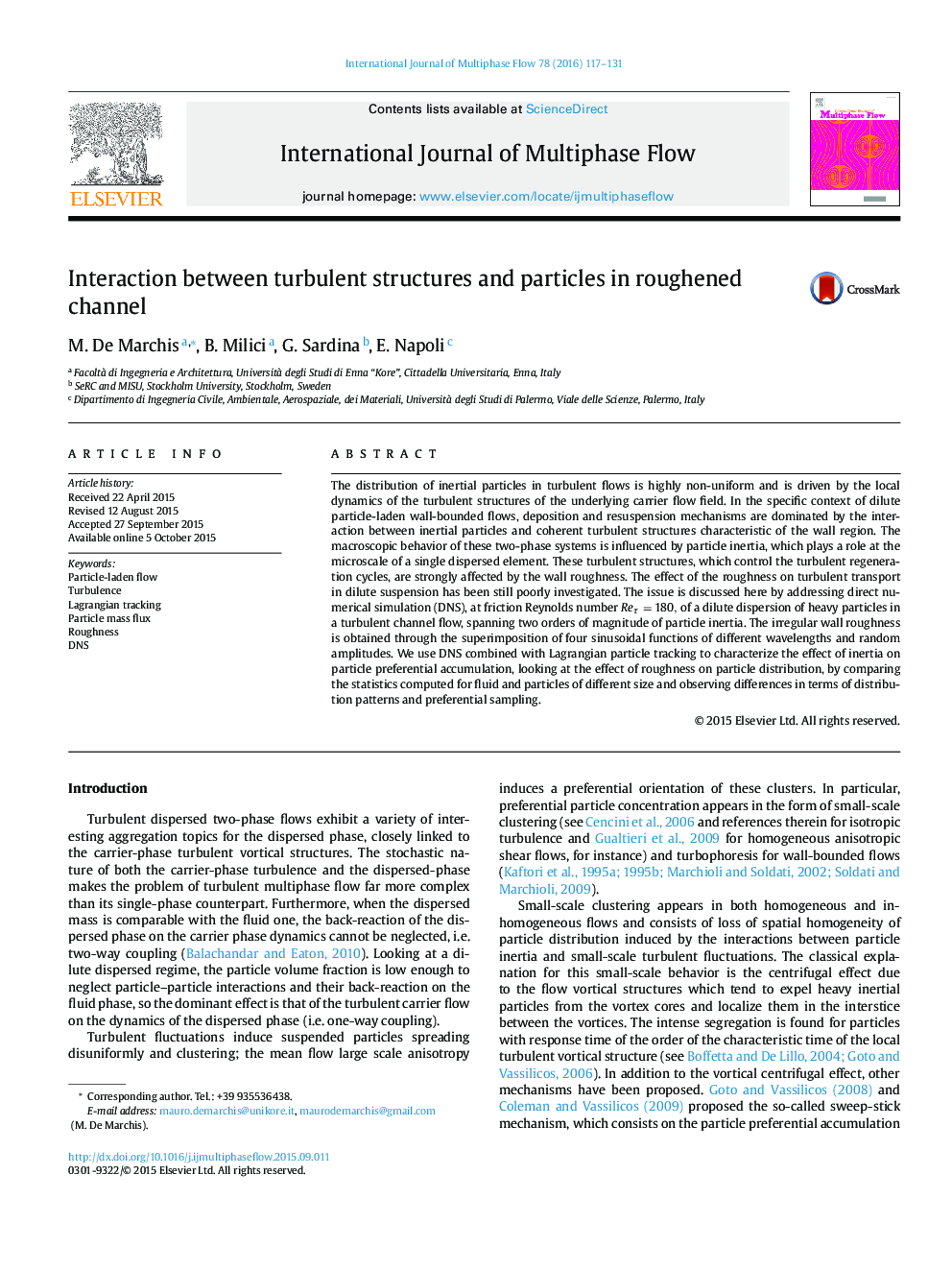| Article ID | Journal | Published Year | Pages | File Type |
|---|---|---|---|---|
| 7060312 | International Journal of Multiphase Flow | 2016 | 15 Pages |
Abstract
The distribution of inertial particles in turbulent flows is highly non-uniform and is driven by the local dynamics of the turbulent structures of the underlying carrier flow field. In the specific context of dilute particle-laden wall-bounded flows, deposition and resuspension mechanisms are dominated by the interaction between inertial particles and coherent turbulent structures characteristic of the wall region. The macroscopic behavior of these two-phase systems is influenced by particle inertia, which plays a role at the microscale of a single dispersed element. These turbulent structures, which control the turbulent regeneration cycles, are strongly affected by the wall roughness. The effect of the roughness on turbulent transport in dilute suspension has been still poorly investigated. The issue is discussed here by addressing direct numerical simulation (DNS), at friction Reynolds number ReÏ=180, of a dilute dispersion of heavy particles in a turbulent channel flow, spanning two orders of magnitude of particle inertia. The irregular wall roughness is obtained through the superimposition of four sinusoidal functions of different wavelengths and random amplitudes. We use DNS combined with Lagrangian particle tracking to characterize the effect of inertia on particle preferential accumulation, looking at the effect of roughness on particle distribution, by comparing the statistics computed for fluid and particles of different size and observing differences in terms of distribution patterns and preferential sampling.
Related Topics
Physical Sciences and Engineering
Chemical Engineering
Fluid Flow and Transfer Processes
Authors
M. De Marchis, B. Milici, G. Sardina, E. Napoli,
